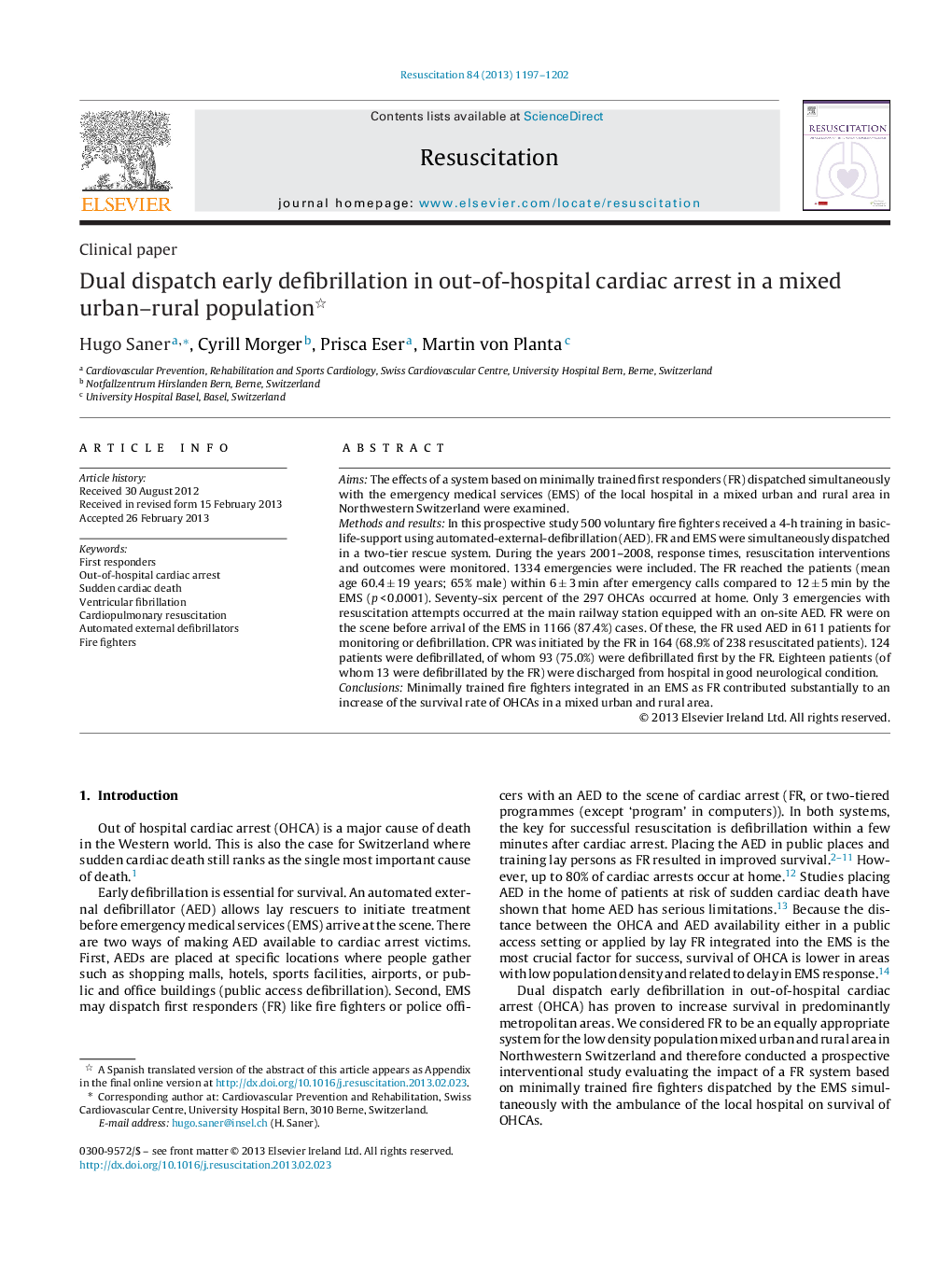| Article ID | Journal | Published Year | Pages | File Type |
|---|---|---|---|---|
| 3008685 | Resuscitation | 2013 | 6 Pages |
AimsThe effects of a system based on minimally trained first responders (FR) dispatched simultaneously with the emergency medical services (EMS) of the local hospital in a mixed urban and rural area in Northwestern Switzerland were examined.Methods and resultsIn this prospective study 500 voluntary fire fighters received a 4-h training in basic-life-support using automated-external-defibrillation (AED). FR and EMS were simultaneously dispatched in a two-tier rescue system. During the years 2001–2008, response times, resuscitation interventions and outcomes were monitored. 1334 emergencies were included. The FR reached the patients (mean age 60.4 ± 19 years; 65% male) within 6 ± 3 min after emergency calls compared to 12 ± 5 min by the EMS (p < 0.0001). Seventy-six percent of the 297 OHCAs occurred at home. Only 3 emergencies with resuscitation attempts occurred at the main railway station equipped with an on-site AED. FR were on the scene before arrival of the EMS in 1166 (87.4%) cases. Of these, the FR used AED in 611 patients for monitoring or defibrillation. CPR was initiated by the FR in 164 (68.9% of 238 resuscitated patients). 124 patients were defibrillated, of whom 93 (75.0%) were defibrillated first by the FR. Eighteen patients (of whom 13 were defibrillated by the FR) were discharged from hospital in good neurological condition.ConclusionsMinimally trained fire fighters integrated in an EMS as FR contributed substantially to an increase of the survival rate of OHCAs in a mixed urban and rural area.
